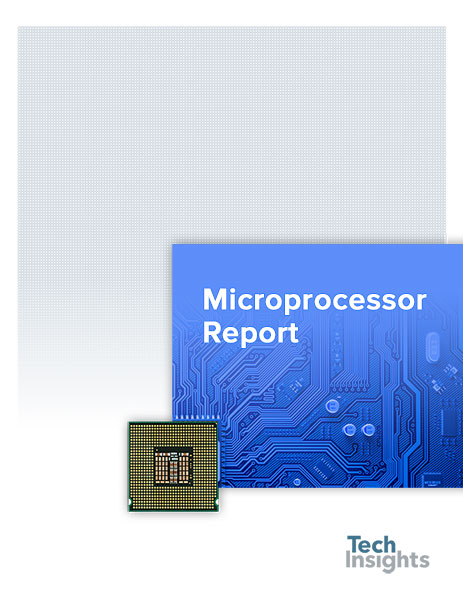Microprocessor Report
For more than 30 years, Microprocessor Report (MPR) has been the industry's go-to source for the latest microprocessor news. This subscriber-only publication covers a broad range of semiconductor topics. We publish an average of three new articles per week, each covering a new product, technology, or trend.
Our core coverage is of processors and SoCs for servers, PCs, supercomputers (HPC), smartphones, wearables, embedded systems, IoT devices, communications and networking equipment, and advanced automotive applications. We also cover licensable and open-source cores for CPU, DSP, graphics, and other functions. Many of our recent articles cover AI accelerators for cloud, edge, automotive, mobile, and IoT.
Deep Insight and In-Depth Analysis
Today's complex SoCs contain a variety of functions beyond the processor, so our coverage extends to wired and wireless communications protocols such as 5G, LTE, Ethernet, Wi-Fi, PON, PCI Express, and InfiniBand. We also cover special-purpose chips such as search engines, fabrics, silicon photonics, FPGAs, PHYs, cellular RF, high-bandwidth memory, and new memories such as Optane and NRAM.
We often write about new companies, new technologies, and new design approaches to keep our subscribers up to date on trends. We are particularly interested in new technologies for SoC design and manufacturing. We also keep an eye on mergers and acquisitions, and we use our in-house market-share data to highlight shifts in the market.

Microprocessor Report

Year in Review: AI Continues March to the Edge
See how AI progressed to the edge in 2024, with breakthroughs in edge AI chips, NPUs, and 64-bit MCUs enhancing performance and efficiency.
Editorial: The NPU Will Be the Workhorse of the AI PC
It’s still early days for the AI PC, where AI workloads are being run in roughly equal proportion on NPUs, GPUs, and CPUs. But in the not so distant future, we expect NPUs to take on the lion’s share of AI workloads in the AI PC.
Apple R1 Adopts TSMC’s Latest Package
Apple’s R1 sensor hub chip in the Vision Pro AR/VR headset is the first use that TechInsights has seen of TSMC’s InFOM advanced packaging technology. The R1 has a 5nm processor chip plus two LLW DRAMs linked by short very-high-density interconnect to speed up the data processing.
Intel’s Three-Pronged Recovery Plan
As Pat Gelsinger begins his fourth year as CEO, three projects to revitalize Intel’s fabs, CPUs, and AI accelerators could restore its technology lead, but they won’t reach the market until 2025.
Synopsys Joins RISC-V Bandwagon
Synopsys has added RISC-V to its CPU portfolio with three ARC-V families. Application coverage extends from small low-power functions to 64-bit multicore and multicluster high-performance embedded designs.




